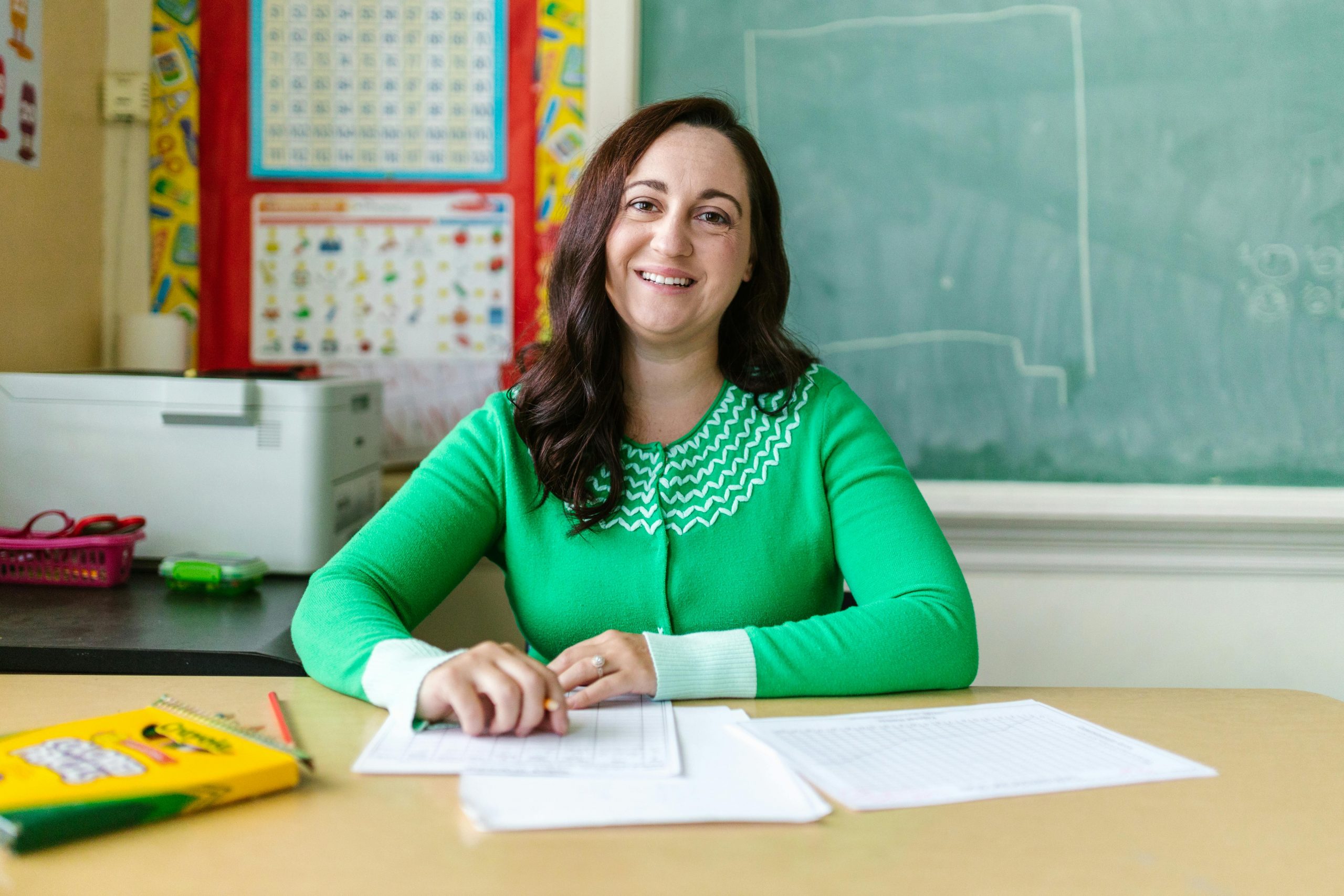Suddenly, you’re not in the same physical space as your students. We asked teachers to share strategies for maintaining relationships—both peer-to-peer and student-teacher—when everything’s gone remote.
By Sarah Gonser
March 25, 2020
On any given day in schools across America, many students exchange warm greetings with a smiling teacher, then perhaps move on to a morning check-in, followed by a quick mindfulness exercise to start the day grounded and mentally focused. Surrounded by peers they’ve known for months, or perhaps even years—and a teacher they see daily—kids feel connected.
In spite of some critics who downplay the importance of social and emotional learning and the value of belonging—the number of such skeptics is falling, to be sure—the research is clear and has been for some time: When kids spend their daytime hours in safe, supportive schools where adults work every day to build strong relationships with every student, they are simply better, more engaged learners.
But how should educators foster that sense of belonging in this new, decentralized world—with teachers and students tethered loosely together via Wi-Fi and cellular networks?
“Right now, it’s all about the technology—the mechanics of how to teach remotely. But when I speak to my colleagues who are high school teachers, it’s about: ‘How are we going to hold our students’ hearts?’” says Mays Imad, a professor of pathophysiology and biomedical ethics at Pima Community College.
So we asked dozens of teachers, and peeked in on Instagram and Twitter threads, to find some of the best ideas that teachers are experimenting with to maintain the relationships that drive engagement and learning.
- TRY TO SAY HELLO FREQUENTLY, IF YOU CAN
Try to make sure your kids know you are thinking of them, care for them, and miss them. For kids with access to technology, simple daily hellos via video might be the only time the student sees the teacher on some days—and that sense of connection is important to sustain.
First- and second-grade teacher John Thomas’ masterful, fun hello video to his students is a great example.
For students without internet connectivity, try calling by phone; consider rotating through small groups of students each day to make this a more manageable task. “Taking the time to reach out and call each kid takes forever,” says sixth- and eighth-grade English teacher Cathleen Beachboard, but she’s seeing a big impact: “The first few days, I had only a few kids logging on, but now I have almost 98 percent attendance,” she says.
- HOW TO MAINTAIN MORNING MEETINGS
Routines that foster connection are a core part of classroom life, and finding ways for students to experience these at home will go a long way toward easing students’ transition to home-based learning. “If you do morning meeting, reflect on the elements you have in your meeting and what could be completed virtually at home,” writes Thomas. “If technology allows, record and share daily video announcements and read-alouds.”
Margaret Shafer, a third-grade teacher, has kids respond to daily prompts during her morning meetings. Kids can see each other’s responses and react if they want to. “My relationships with my students are part of my instruction, and their relationships with each other are critical to their enjoyment of school,” she says, underscoring the fact that maintaining relationships is not an afterthought. “So when I planned (very quickly!) to start distance learning, the first thing I wanted to start daily was a way to comfort the kids and let them know that I still care about them and their friends are still out there.”
- REIMAGINE TEMPERATURE CHECKS
Routine, everyday check-ins—roses and thorns or selecting an emoji to match your mood, for example—shouldn’t fall by the wayside. Keep it quick and simple: “I posted on Schoology to give me a thumbs up, thumbs sideways (meh), or thumbs down to describe their day…. I encourage them to take selfies of their thumbs,” says high school teacher Javier Rivera via Twitter.
Along with checking in with her students herself, Imad is making connecting with peers part of her students’ homework: Each student is assigned the task of connecting with one classmate. “Then, I’m asking them to write to me and tell me how, say, Jackie is doing today. They can decide how they want to check in—email, text, Skype,” she says, adding that she sets up guidelines and models the practice for her students first. “This exercise might work even better with K-12—’My homework is to check on Allie.’”
Finally, some teachers are using forms, like this one created by the Association for Middle Level Education, as a quick, asynchronous way to get kids to tell you how they’re feeling that day.
- TRY SNAIL-MAIL PEN PALS, PHONE PALS, OR VIRTUAL TURN AND TALK
We learn better in social contexts. For many students, transitioning to learning from home is complicated by the impact of being cut off from peers—even though many older students might communicate with friends via social media and texting.
“If technology doesn’t allow, create pen pals or other paper-and-pen activities by sending home envelopes, paper, and stamps if your school is able,” says Thomas. “Or mimic ‘turn and talk’ by setting up phone pals where students call each other on the phone several times a week to discuss specific topics or prompts.”
Third-grade teacher Michael Dunlea follows his whole-group instruction via Zoom with breakout rooms so that peers can reflect on the learned material together. Then he seeks deeper connections with students individually: “I keep one student on for a one-on-one conference and ask them to read out loud for a few minutes. This time also provides an opportunity to check on their emotional well-being and see if they need clarification on assignments.”
- CREATE VIRTUAL TABLES (BUT DON’T JUST GROUP FRIENDS)
For older kids, says Kasey Short, an eighth-grade English teacher at Charlotte Country Day School in Charlotte, North Carolina, teachers can set up virtual table groups. Short uses Google Classroom for this because her students are already familiar with the platform. “I will set up discussion threads with four to five students so they can discuss assignments, ask each other questions, and stay connected,” she says.
Though many kids will stay in touch with their circle of friends, she says it’s important to think about pairing kids with peers who aren’t in their immediate social circle—and then mix up the groups weekly. “There will also be spaces for whole class discussions, but I know many students will feel more comfortable sharing ideas in a smaller group setting,” she says.
- CONSIDER INCLUDING PARENTS
Dunlea, the third-grade teacher, asks students to invite a parent online, giving the adults an opportunity to ask questions, express concerns, or request advice.
Beachboard, the sixth- and eighth-grade English teacher, connects with parents each day—she uses the messaging platform Remind, or a dedicated Google Voice phone line for parents who don’t have text messaging. She also connects with families by email. “I check in with them once a day with a ‘How are you?’ and ‘Do you need anything?’” she says. “It’s important at this time, more than any other, that we are looking out for the mental health of our families and students.”
- GET KIDS TO NAME—AND PROCESS—THEIR OWN EMOTIONS
Writing assignments, says Short, the English teacher, offer valuable opportunities for students to process the complex mix of emotions they may be experiencing as a result of their upended routines and schedules, social isolation, and the challenges of being cooped up at home.
“I am going to use some writing opportunities for students to get their thoughts, feelings, fears, and questions down in a creative format of their choice,” she says. “I will give them an option to share with the class, or only share with me. This will not only allow them to share out their feelings but also give me a place to check on them and follow up if I see any of them expressing sadness, fear, etc., that their parents may need to know about.”
Most important, says Short, “I am going to be honest and as understanding as possible to let students know we are all in this together and will likely all need a little grace.”









